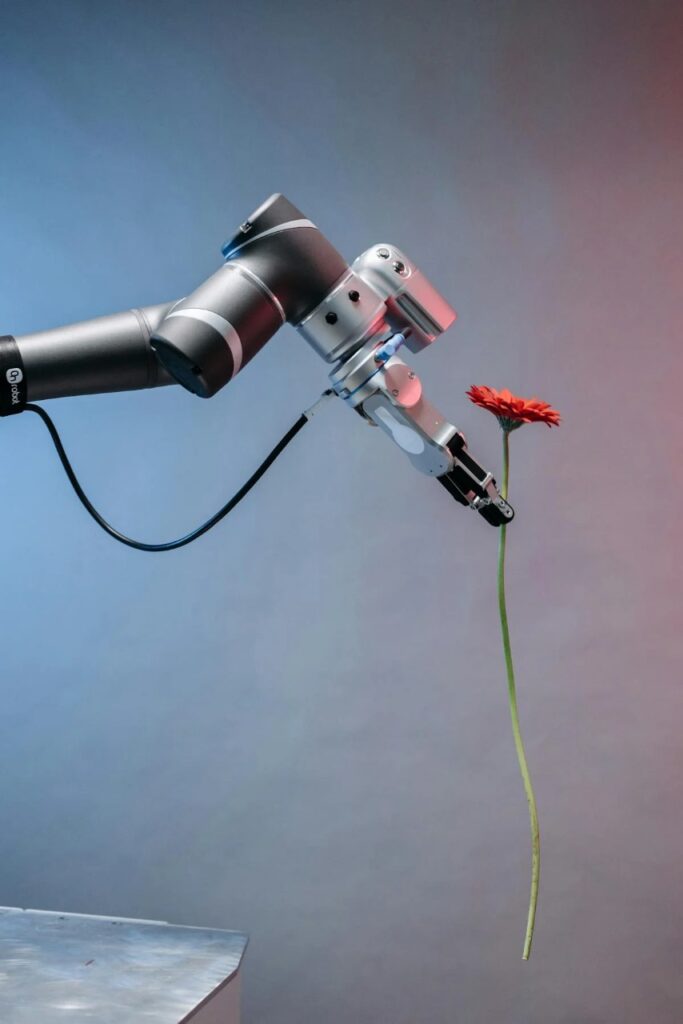Hello, and welcome back to my blogs 😊 I work in soil spectroscopy, precision agriculture, and data analysis. While my focus is on technology and lifelong learning, AI is reshaping research across all industries—whether it’s finance, healthcare, or environmental science.
AI is more than just chatbots or futuristic robots. It’s here, working behind the scenes, analyzing data, automating decisions, and making industries smarter. Agriculture is no exception. From smart sensors in the soil to AI-driven drones in the sky, farming is now a tech-driven industry.
So, why should someone in finance, healthcare, or manufacturing care about AI in agriculture? Because the same AI principles—data collection, predictive modeling, automation—are transforming every industry. Let’s explore how.

Smart Sensors: From Soil to Supply Chains
In agriculture, AI-powered soil sensors give real-time insights on moisture, nutrients, and pH levels. Instead of guessing when to water or fertilize, farmers now use data-driven decisions, just like businesses use AI to analyze market trends and customer behavior.
But the impact doesn’t stop at the farm. The same AI-driven IoT (Internet of Things) sensors that track soil health are also used in supply chains—monitoring food freshness, predicting storage conditions, and reducing waste. Retailers and logistics companies rely on AI just as much as farmers do.
Drones and Satellites: AI as a Research Assistant
Imagine trying to monitor a 1000-hectare farm. A decade ago, this would have been impossible. Today, AI-powered drones scan entire fields in minutes, analyzing crop health, identifying diseases, and spotting water stress before it’s too late.
In many ways, this is similar to AI-driven medical imaging—where AI scans X-rays or MRIs to detect issues faster than humans. The key here is pattern recognition—whether it’s a weak plant in a field or an anomaly in a dataset, AI excels at finding hidden signals in complex data.
AI and Robotics: Automation Beyond Factories
Robots aren’t just for car manufacturing anymore. AI-driven robots are now used to weed fields, pick fruits, and spray pesticides with precision. These robots use computer vision and machine learning to distinguish between crops and weeds—just like AI in self-driving cars recognizes pedestrians and road signs.
Similarly, AI-driven robotics is changing research labs—from automating lab experiments to optimizing scientific workflows. Whether in biotech, chemistry, or engineering, AI reduces manual tasks so experts can focus on high-value analysis.
Data Analysis: AI as a Decision-Maker
As a researcher, I work with large datasets—spectral data from soil, sensor readings, and environmental conditions. AI helps process, clean, and analyze this data, finding patterns that humans would take weeks to discover.
But this isn’t just useful in agriculture. AI-powered predictive analytics is used in finance for stock market predictions, in marketing for consumer behavior analysis, and in healthcare for early disease detection. The challenge isn’t just collecting data—it’s making sense of it, and that’s where AI shines.
AI: The Tool, Not the Threat
AI is not here to replace scientists, farmers, or decision-makers. It’s here to enhance their work, helping them make better, faster, and more informed decisions.
The same debate is happening across industries:
The answer is the same: AI is a tool, not a replacement. Those who learn to use AI effectively will lead the future.
Final Thoughts: AI Is Everywhere—Are You Ready?
AI is reshaping agriculture, research, and every other industry. It’s helping us optimize resources, improve decision-making, and automate repetitive tasks.
So, whether you work in tech, healthcare, business, or academia, understanding AI isn’t just a competitive advantage—it’s becoming essential.

Good day,
I am pursuing a Ph.D. in Agricultural Sciences, specializing in soil and water research. I aim to develop a surface sensor capable of measuring soil organic carbon (SOC) at different depths. Additionally, I am incorporating univariate and multivariate modeling processes using Random Forest to establish calibration procedures and spatial analysis in a production field that will be characterized.
I am always open to international collaboration and exchanges of experience on this specific topic. The research is being conducted in Colombia (Cundinamarca), and I would like to establish connections that could help enhance my study.